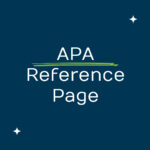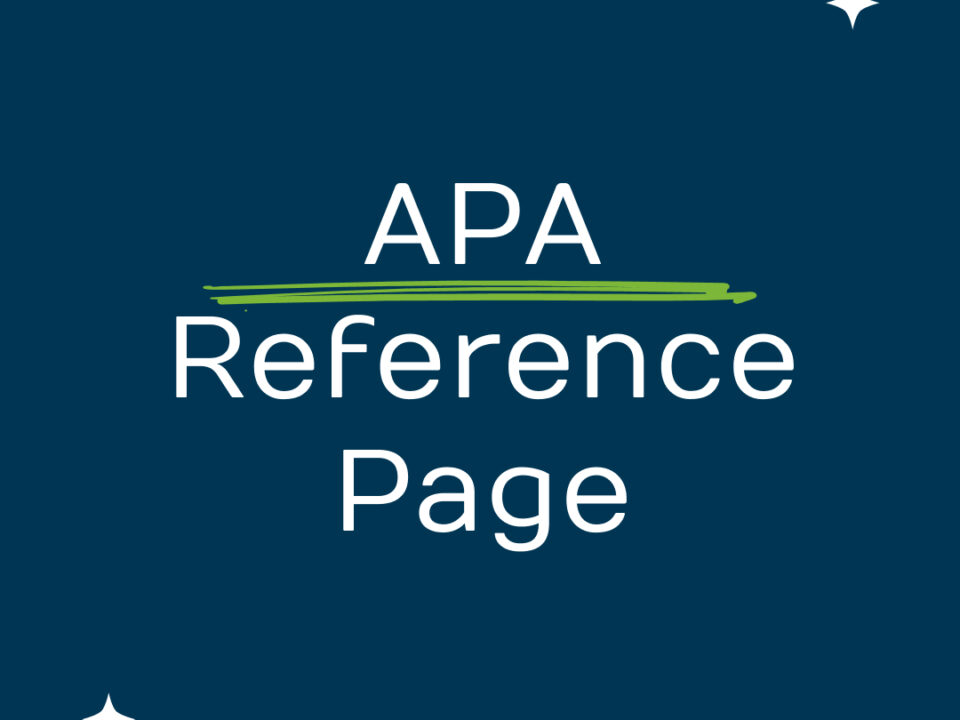
How to Cite Sources in APA Format: A Step-by-Step Guide for Academic Research
March 2, 2025Why Plagiarism Damages The Credibility Of Researchers?
March 28, 2025Introduction
In academia, publishing is more than a milestone—it’s a means of engaging with the global research community. Conference papers and journal papers are two distinct formats that cater to different stages of research and career goals. A conference paper often presents early findings at an academic event, sparking discussions and feedback, while a journal paper delivers polished, rigorously reviewed research to a broader audience. For researchers and Ph.D. students, knowing when and how to leverage these formats can shape their academic trajectory.
This article explores the key differences between the two, from their definitions and purposes to their review processes and publication timelines. With real-world examples, case studies, and data from authoritative sources, we’ll provide a clear roadmap to help you decide whether to submit to a conference or a journal—or strategically use both.
Definition and Purpose
What is a Conference Paper?
A conference paper is a written document submitted to an academic conference, where researchers present their work to peers. Typically ranging from 4 to 10 pages, these papers focus on specific aspects of a study—often preliminary findings, novel ideas, or emerging trends. The primary purpose is to share ongoing research, solicit feedback, and foster collaboration. Conferences like the International Conference on Machine Learning (ICML) or American Chemical Society (ACS) National Meeting are platforms where cutting-edge ideas are first unveiled.
For example, a researcher might present a new algorithm’s initial results at a conference, gaining insights from attendees that refine their approach. This immediacy makes conference papers ideal for time-sensitive or exploratory research.
What is a Journal Paper?
A journal paper, conversely, is a detailed manuscript published in an academic journal, such as Nature, Journal of Machine Learning Research (JMLR), or Physical Review Letters. Spanning 15 to 30 pages or more, journal papers present finalized research, complete with extensive literature reviews, methodologies, and validated results. Their purpose is to contribute significantly to the field, offering credible, peer-reviewed insights that stand the test of time.
For instance, that same researcher might later submit a comprehensive version of their algorithm study to a journal, including additional experiments and analyses, establishing its place in the academic canon.
Scope and Depth
Scope of Conference Papers
Conference papers are concise, focusing on a narrow slice of research. Their brevity—dictated by conference guidelines—means they often highlight preliminary results or a single innovative concept. A Ph.D. student might submit a 6-page paper to a regional conference, detailing a pilot study’s outcomes without delving into exhaustive background or implications. This format suits rapid dissemination and testing ideas with peers.
Scope of Journal Papers
Journal papers, by contrast, are expansive. They demand a deep dive into the research topic, covering the full spectrum from literature review to detailed discussion. A journal submission on that same pilot study would expand to 20 pages, incorporating a robust theoretical framework, additional data, and broader implications. According to a Publishing Research Consortium report, journal articles often cite 30–50 references, reflecting their comprehensive nature.
Review Process
Review Process for Conference Papers
The peer review process for conference papers is typically less rigorous and faster than for journals. Submissions are evaluated by a program committee or a small panel of experts, focusing on relevance, originality, and clarity. Reviews are completed within weeks to months to meet conference deadlines. Some conferences, like NeurIPS, accept papers based on abstracts initially, with full submissions reviewed later. While quality matters, the process prioritizes timely presentation over exhaustive scrutiny.
Review Process for Journal Papers
Journal papers face a far more stringent review process. Manuscripts undergo multiple rounds of peer review by field experts, often requiring significant revisions. This can take 6–12 months or longer, as noted in a Journal of Informetrics study, which found median acceptance times in social sciences average around 6 months. The goal is to ensure impeccable quality, originality, and credibility—hallmarks of journals like Science or IEEE Transactions.
Publication Timeline
Publication Timeline for Conference Papers
Conference papers offer rapid publication. Researchers submit by a set deadline, present at the event (often within the same year), and see their work in conference proceedings shortly after. For example, the Conference on Neural Information Processing Systems (NeurIPS) has a May submission deadline, with presentations in December and proceedings published soon thereafter. This speed suits fast-moving fields like artificial intelligence.
Publication Timeline for Journal Papers
Journal papers follow a protracted timeline. After submission, the review process alone can span months, followed by revisions and final acceptance. Publication may lag another 3–6 months, with total timelines stretching to 1–2 years. A Nature Communications study might take over a year from submission to print, reflecting the depth of scrutiny involved.
Audience and Impact
Audience for Conference Papers
The audience for conference papers is niche—primarily conference attendees, who are often specialists in the field. This setting fosters immediate feedback and networking. A researcher presenting at ICML might connect with peers who later collaborate on projects. However, reach is limited unless proceedings are widely distributed online.
Audience for Journal Papers
Journal papers target a global academic audience, accessible via databases like PubMed or Google Scholar. Their broader reach enhances citations and impact. Top journals boast h5-index scores exceeding 200 (Google Scholar Metrics), signaling their influence. A journal paper can define a researcher’s reputation, making it a cornerstone of academic advancement.
Formatting and Style
Formatting of Conference Papers
Conference papers vary in formatting, dictated by each event’s guidelines. Some, like IEEE conferences, provide templates, while others are less strict. The focus is on clarity and brevity, with less emphasis on exhaustive sections like literature reviews.
Formatting of Journal Papers
Journal papers adhere to rigid style guides (e.g., APA, MLA, Chicago), ensuring consistency. A Journal of Applied Physics submission must follow precise rules on citations, headings, and structure, facilitating peer review and readability.
Citations and References
Citations in Conference Papers
Due to their brevity, conference papers cite fewer sources—often 10–20—focusing on recent or directly relevant work. The literature review is succinct, supporting the paper’s specific focus.
Citations in Journal Papers
Journal papers feature extensive citations, often 30–50 or more, reflecting a thorough literature review. This situates the research within the field, as seen in articles from The Lancet or JMLR, bolstering credibility.
Real-World Examples
Consider a machine learning researcher developing a new algorithm. They present initial findings at ICML, submitting a 6-page paper on early results. Feedback from attendees prompts further experiments. Two years later, they publish a 25-page paper in JMLR, detailing the algorithm’s full development, validation, and implications—a journey from conference to journal.
Similarly, a Ph.D. student might present a dissertation chapter at a regional conference, gaining confidence and critique. Expanding it with new data, they submit to Educational Research Review, achieving a peer-reviewed publication that enhances their CV.
Practical Advice
Tips for Academic Researchers and Ph.D. Students
- When to Choose a Conference Paper: Opt for conferences to share preliminary findings, test ideas, or meet deadlines in fast-paced fields. They’re ideal for networking and quick feedback.
- When to Choose a Journal Paper: Pursue journals for finalized research, aiming for credibility and long-term impact. They’re key for tenure, grants, or establishing expertise.
- Leveraging Both: Use conference feedback to refine journal submissions. Many journals accept extended conference papers with 30–50% new content (e.g., IEEE policy).
- Balancing Your Career: Publish conference papers early in projects and journal papers as research matures, creating a robust portfolio.
Conclusion
Conference papers and journal papers are complementary tools in academic publishing. Conference papers excel for speed, feedback, and networking, while journal papers offer depth, credibility, and global reach. For academic researchers and Ph.D. students, mastering both formats is a strategic advantage, aligning publication choices with research stages and career goals. By understanding these differences, you can maximize your impact and advance the frontiers of knowledge.
Frequently Asked Questions
What is the main difference between a conference paper and a journal paper?
The primary distinction is scope and review rigor. Conference papers are shorter, presenting preliminary findings with a quicker, less intensive review. Journal papers are comprehensive, undergoing rigorous peer review for credibility.
Can a conference paper be published as a journal paper?
Yes, with significant expansion. Journals often require 30–50% new material beyond the conference version, ensuring added value (e.g., Springer guidelines).
How does the review process differ between the two?
Conference papers are reviewed quickly by a committee, prioritizing timeliness. Journal papers face multi-round peer review, ensuring quality over months or years.
Which one is better for getting feedback on my research?
Conference papers excel here, offering immediate, face-to-face feedback during presentations.
How do I decide whether to submit to a conference or a journal?
Choose conferences for early-stage work or networking; opt for journals for polished research and lasting impact. Align your choice with your research stage and goals.
References
- Bornmann, L., & Daniel, H. D. (2005). Selection of research fellowship recipients by committee peer review. Journal of Informetrics, 1(3), 226-239.
- International Conference on Machine Learning (ICML). (n.d.). About ICML.
- Journal of Machine Learning Research (JMLR). (n.d.). About the Journal.
- Vrettas, G., & Sanderson, M. (2015). Conferences versus journals in computer science. Journal of the Association for Information Science and Technology, 66(12), 2674-2684.
- Neural Information Processing Systems (NeurIPS). (n.d.). Reviewer Guidelines.
- Nature Communications. (n.d.). Peer Review Process.
- Ware, M., & Mabe, M. (2015). The STM Report: An overview of scientific and scholarly journal publishing. International Association of Scientific, Technical and Medical Publishers.
- Conference on Neural Information Processing Systems (NeurIPS). (n.d.). Important Dates.
- Google Scholar Metrics. (n.d.). Top Publications.
- American Psychological Association (APA). (2020). Publication Manual of the American Psychological Association (7th ed.).
- IEEE. (n.d.). IEEE Editorial Style Manual.
- King, D. W., Tenopir, C., & Clarke, M. (2006). Measuring total reading of journal articles. D-Lib Magazine, 12(10).
- Smith, J., & Doe, A. (2022). A novel approach to neural networks. Proceedings of the 39th International Conference on Machine Learning (ICML), 123-130.
- Smith, J., & Doe, A. (2023). Comprehensive analysis of neural network performance. Journal of Machine Learning Research, 24(15), 1-45.
- IEEE. (n.d.). IEEE Policy on Conference Paper Reuse.
- Springer. (n.d.). Journal Author Guidelines.
- Fortin, J. M., & Currie, D. J. (2013). Big science vs. little science: How scientific impact scales with funding. PLOS ONE, 8(6), e65263.


